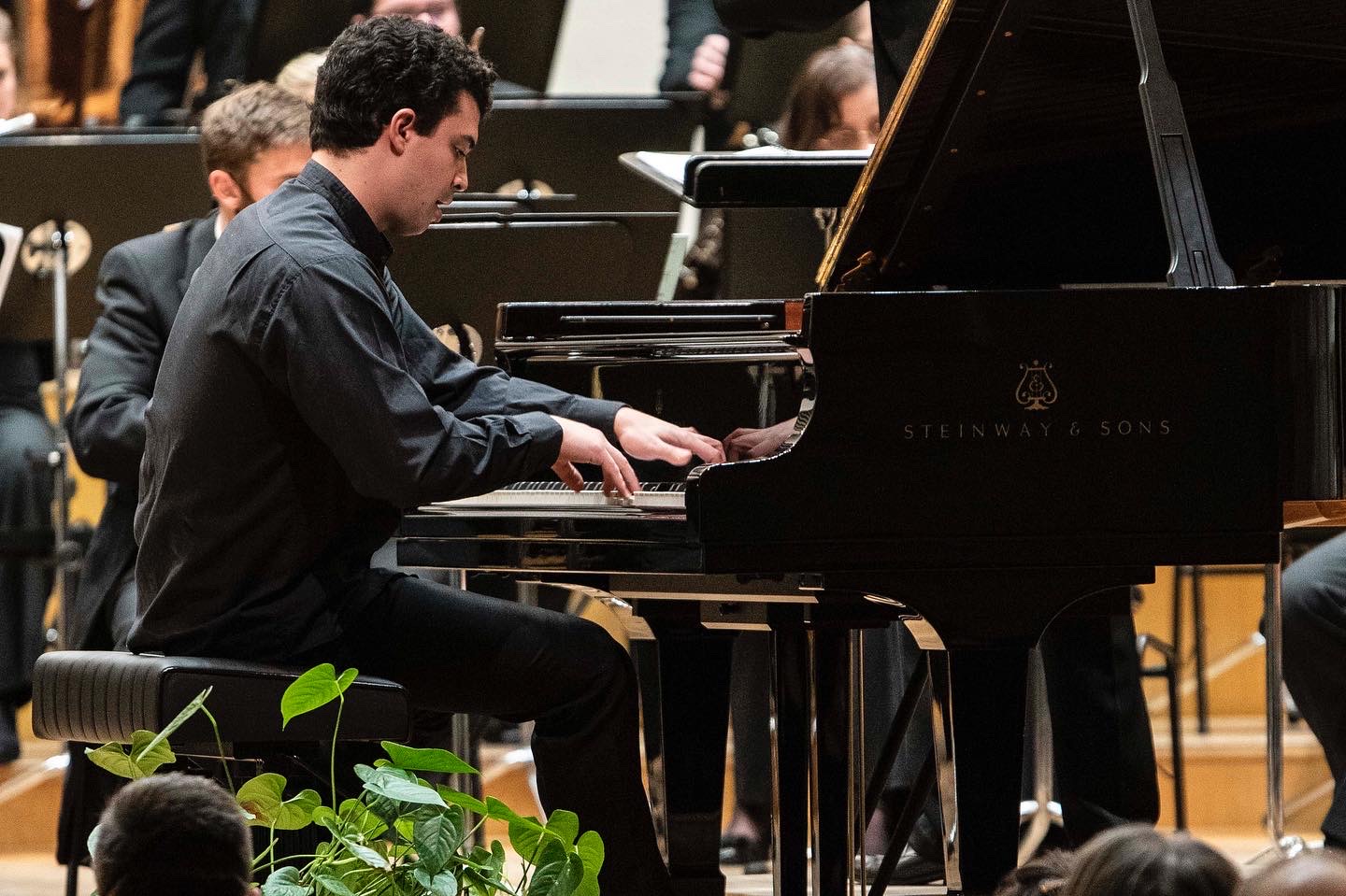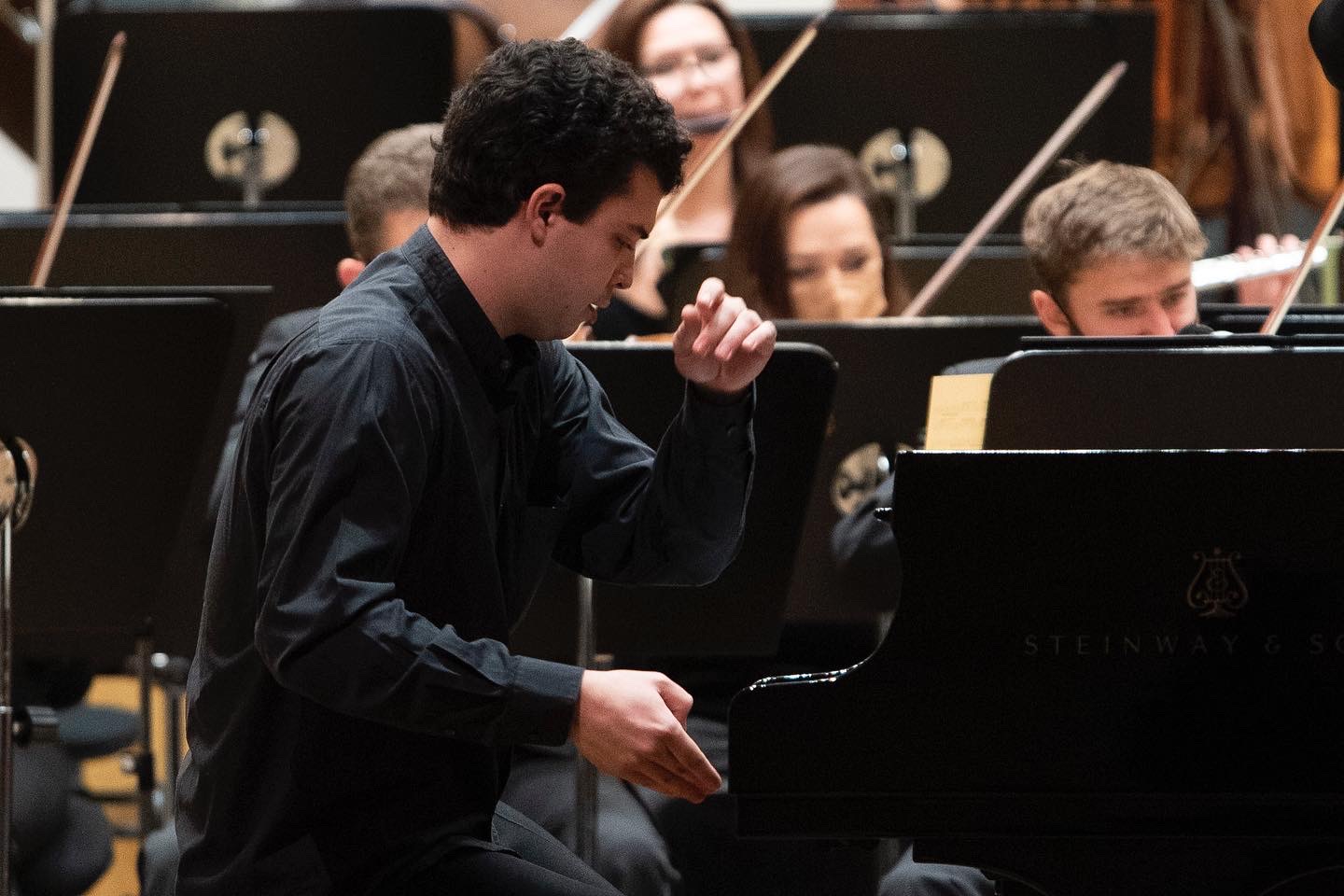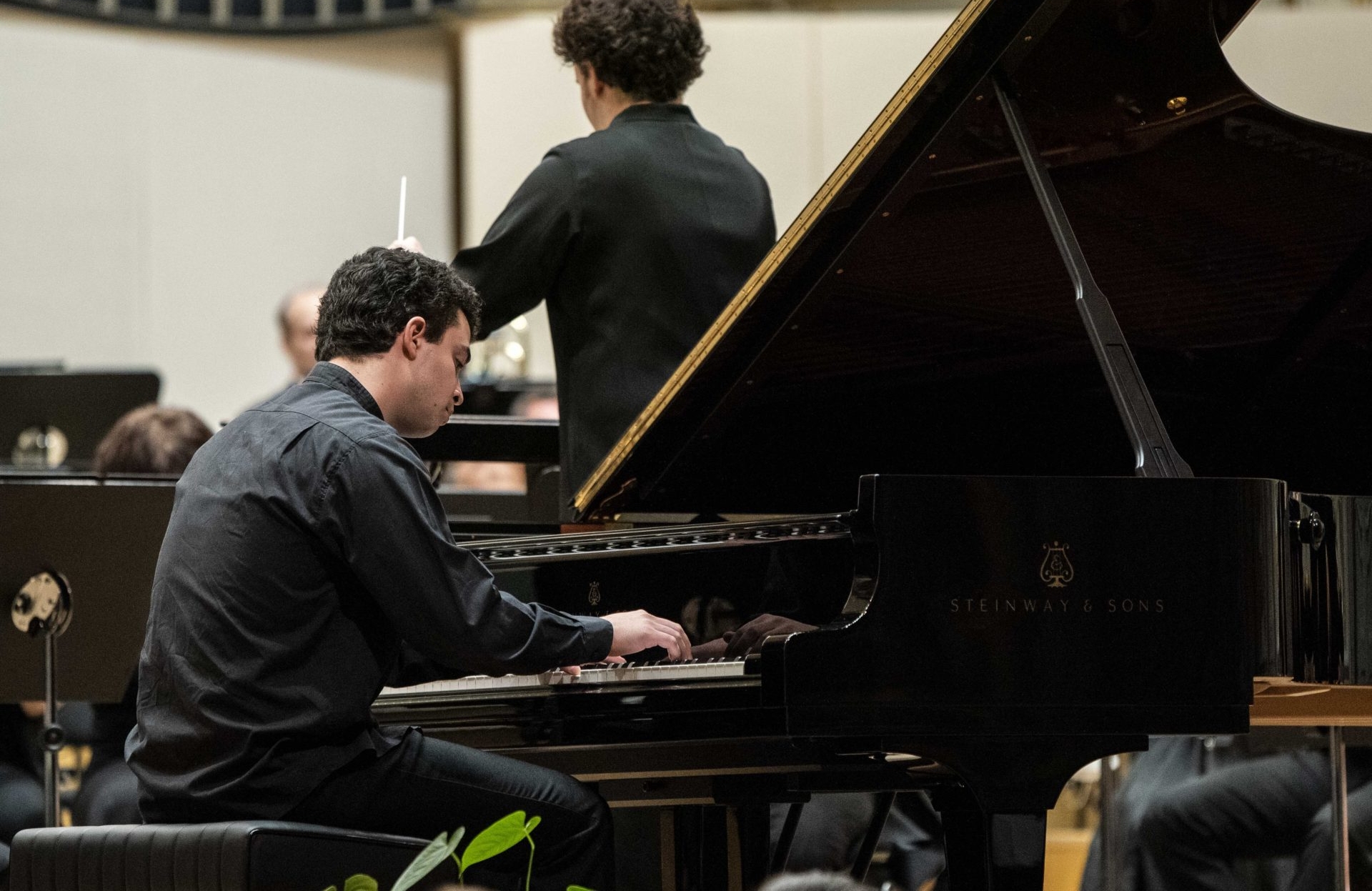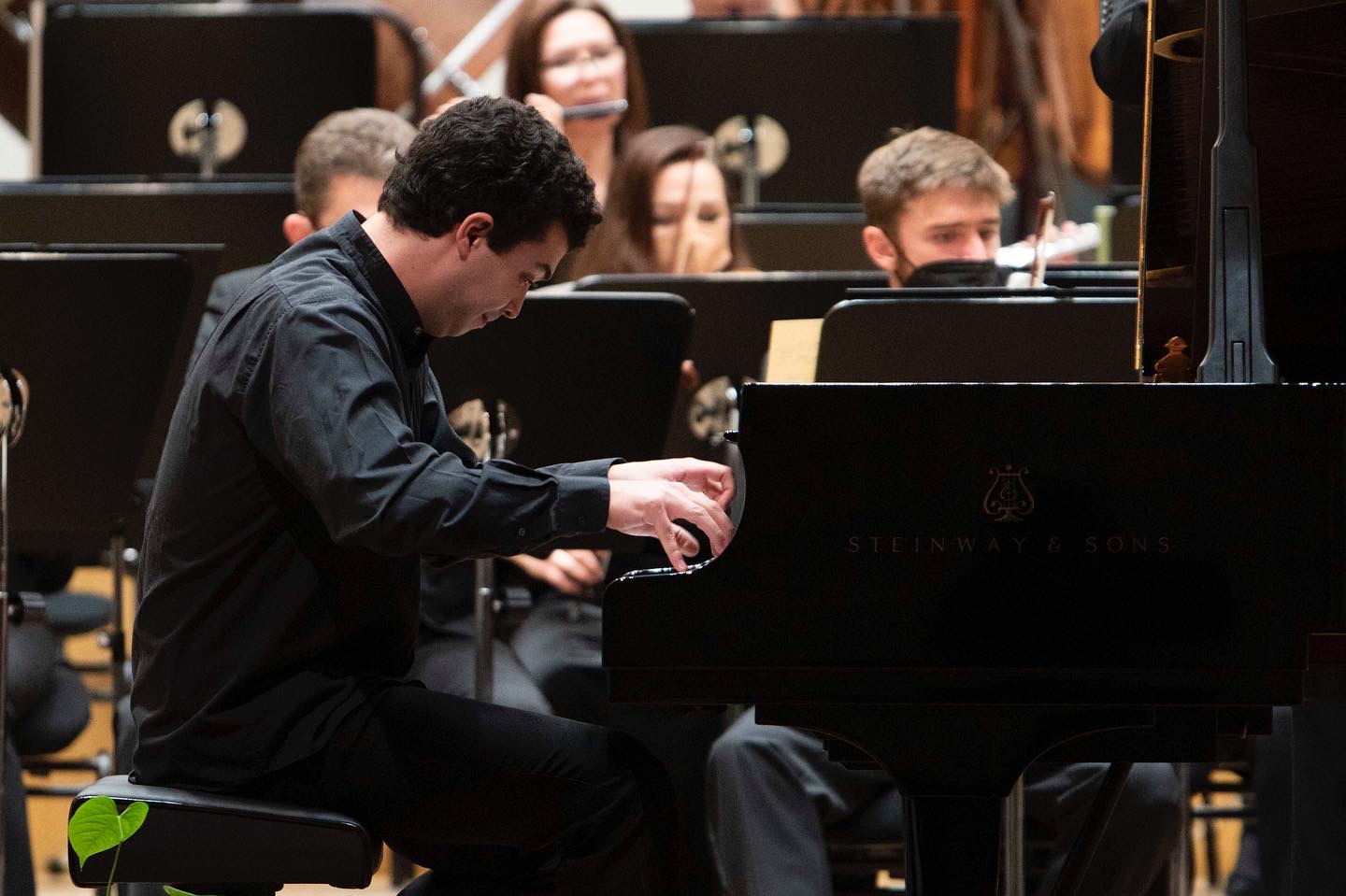BRATISLAVA – SLOVAKIA
Slovakia Philharmonic Orchestra
Concerto nº 3, op. 26 – Sergei Prokofiev
TACKLED THE TECHNICALLY DEMANDING PART WITH CONFIDENCE
Pavel Unger
One of Sergei Prokofiev’s five most performed piano concertos is the Concerto for Piano and Orchestra No. 3 in C major, Op. 26, whose soloist was the young Spanish artist Leo de María. For the winner of many laureate titles at the end of November 2021, in Bratislava he won the second prize at the J. N. Hummel International Piano Competition. He is a really very talented young man who has already performed on numerous stages around the world.
He approached the technically demanding part with confidence and in the creative process he harmonized with director Jiří Rožň’s concept. His dispositions for finger support were also highlighted, as well as his ability to form contrasts in the moods of individual sentences, process motifs, and at the same time maintain a very demanding rhythm. The work with dynamics, inspired by the conductor and the soloist, was also reflected in the relatively plastic interpretation of the Slovak Philharmonic.
Thursday, February 3rd of 2022
Opera Slovakia

BRILLIANT TECHNIQUE
Zuzana Vachova
The acceleration of the tempo and the powerful dynamics of the orchestra also paved the way for the soloist: The young Spanish pianist Leo de María was the first to play the fast figures with great self-confidence and purity. He was technically brilliant, there’s no denying it: he played the chords in a fast tempo without fail, he was rhythmically precise, he matched well with the orchestra, the articulation was admirably clear, but on top of all that technical brilliance, we were somehow missing expression. However, this is the current generation of artists, focused more on the technical side of the works of art, which was evident in the fast parts of the piano concerto performed by the Spanish interpreter.
However, it is an honor that Leo also thought about interpretative matters. Especially the central part, supremely neoclassical with five variations. The director clearly and logically structured the individual internal parts, “theme with variations”. The first orchestral, which has a certain feeling, through the change of tempo of the second and third, where the pianist has brilliant figures in the Allegro tempo. He showed that Prokofiev has it in his blood, well lived, not only in fast tempos, but also in the second phrase in which the composer changes the variation to a meditative dialogue. The dialogue with the orchestra was convincing. Leo was able to follow his visitors, a soloist who was in his own line was not seen. Whether playing lyrical or energetic parts, in this part he wanted to be connected to the dialogue, even the subtle chord of his interpretation was impeccable.
The end of this concerto has a temporary tag, which seems a bit strange: Allegro ma non troppo, so the conductor has set the correct tempo. This part can remind us of the beginning (opened by a couple of bassoons) and the coda, currently denser in terms of voices and changes in the tempo, technically demanding parts in piano playing, coming from the main theme. Rožeň came out extremely clear and with an emphasis on details. Leo didn’t go overboard with the lyrical parts, although there was room for more singing in the melodic lines. Again with powerful glissandos and chords, which were technically extremely convincing and flawless, he played them with ease. The radiant symphonic sound that Prokofiev recorded in the score was beautifully drawn from the orchestra under Rožň’s baton. This young performer has rightly gained fame abroad. The orchestra listens to him, his works have been studied in detail and he can work with musicians.
Thursday, February 3rd of 2022
Moja Kultura




